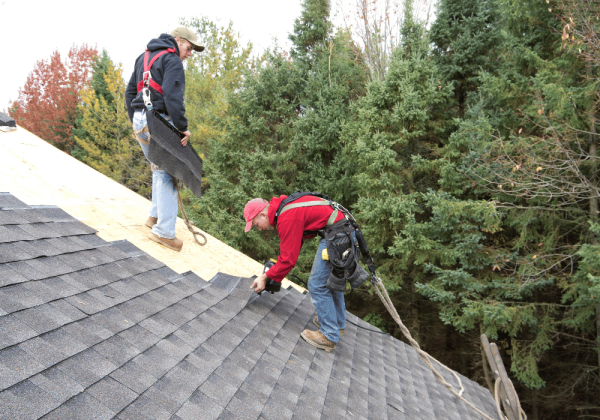When it comes to roofing projects, whether you’re a DIY enthusiast planning a new shed, a homeowner considering roof replacement, or a professional roofer estimating materials for a job, one term you’ll encounter is the “roofing square.” This unit of measurement is pivotal in the roofing industry, yet not everyone is familiar with what it entails or its significance. This comprehensive guide aims to demystify roofing squares, breaking down what they are, why they’re used, and how you can calculate them for your next roofing project.
What Is a Roofing Square?
 A roofing square is a unit of measurement used exclusively in the roofing industry to simplify the process of referring to large quantities of materials needed for roofing projects. One roofing square equals 100 square feet of roofing material. Instead of discussing the requirements or costs in terms of square feet, roofers use squares to streamline communication and calculations.
A roofing square is a unit of measurement used exclusively in the roofing industry to simplify the process of referring to large quantities of materials needed for roofing projects. One roofing square equals 100 square feet of roofing material. Instead of discussing the requirements or costs in terms of square feet, roofers use squares to streamline communication and calculations.
Why Use Roofing Squares?
The use of roofing squares offers several benefits in planning and executing roofing projects:
- Simplification of Estimates: By standardizing measurements into squares, it becomes easier for contractors to provide quick and consistent estimates to homeowners.
- Ease of Ordering Materials: Roofing materials, such as shingles, are often sold by the square, making it straightforward to order the correct amount needed based on the roof’s size in squares.
- Standardization Across Projects: Regardless of the roofing material type or the roof size, using squares as a measurement allows for a consistent approach to planning and comparing roofing projects.
Calculating Roofing Squares
Calculating the number of roofing squares needed for a project requires two main steps: measuring the roof area and converting that area into squares.
Step 1: Measuring the Roof
To measure your roof, you’ll need to calculate the area of each plane (or section) of the roof and then add those areas together to get the total roof area. For simple roof shapes, this can be relatively straightforward, but for more complex roof designs, it may involve calculating the area of multiple triangles and rectangles.
Step 2: Converting to Roofing Squares
Once you have the total roof area in square feet, converting to roofing squares is simple:
- Divide the total area by 100.
- If you end up with a decimal, it’s standard practice to round up to the nearest whole number, as you can’t purchase partial squares of materials.
Example Calculation
Imagine you have a rectangular roof measuring 30 feet by 50 feet. The total area would be 1,500 square feet. Dividing this by 100 gives you 15 squares. This means you would need to order 15 squares of roofing material for your project.
Tips for Accurate Roof Measurements
- Use Satellite Measurement Services: For an initial estimate, consider using satellite roof measurement services available online. These can provide a close approximation of your roof size without climbing onto the roof.
- Hire a Professional: For complex roofs, or if safety is a concern, hiring a professional to conduct the measurements might be the best option.
- Consider Waste and Overage: Always order a little more material than your exact square footage calculation to account for cutting waste and errors. A common practice is to add 10-15% extra material to your order.
 Understanding roofing squares is crucial for anyone involved in roofing projects, from homeowners to contractors. By mastering how to measure your roof and calculate its area in squares, you can more accurately estimate material needs, costs, and communicate effectively with other stakeholders in your roofing project. Remember, precise measurements and a little extra planning can save time, money, and headaches down the road. Whether you’re repairing a small leak or replacing an entire roof, a solid grasp of roofing squares will make you better prepared to tackle your project confidently.
Understanding roofing squares is crucial for anyone involved in roofing projects, from homeowners to contractors. By mastering how to measure your roof and calculate its area in squares, you can more accurately estimate material needs, costs, and communicate effectively with other stakeholders in your roofing project. Remember, precise measurements and a little extra planning can save time, money, and headaches down the road. Whether you’re repairing a small leak or replacing an entire roof, a solid grasp of roofing squares will make you better prepared to tackle your project confidently.
